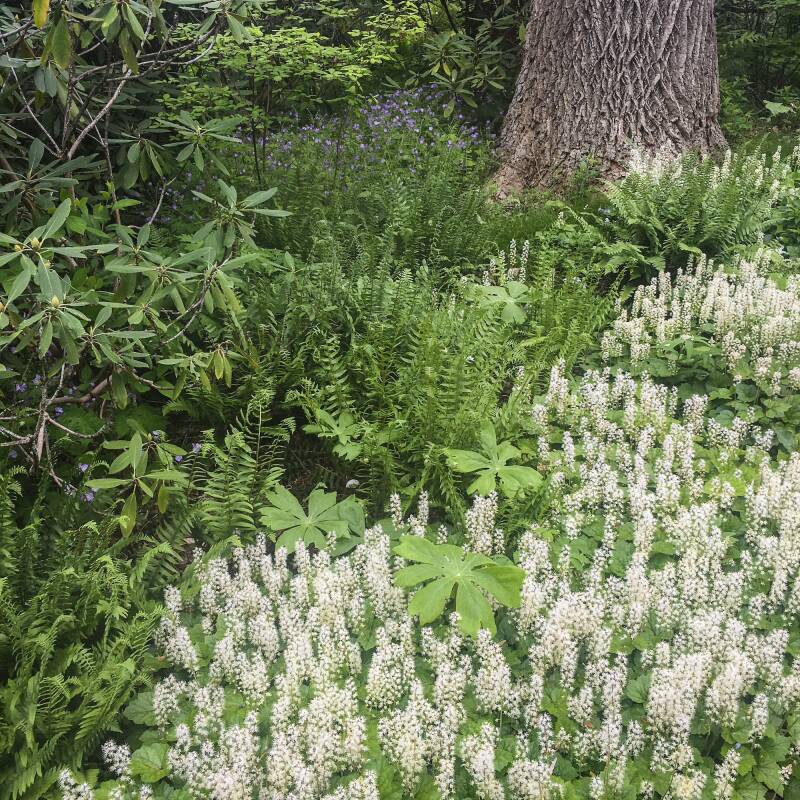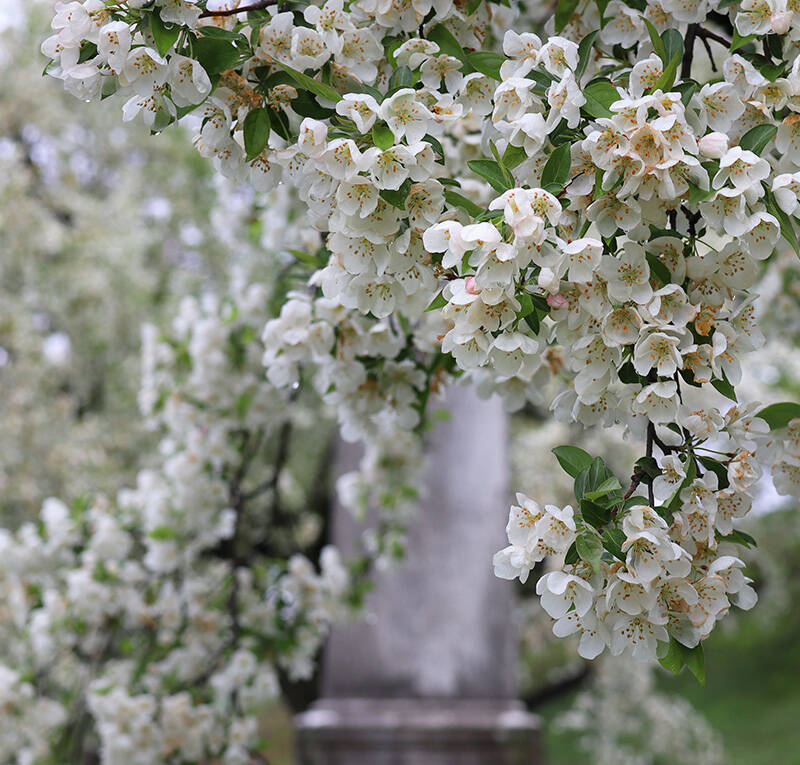Any article about Physostegia begins with the acknowledgement that this plant’s most-common common name, obedient plant, is a misnomer: Physostegia is anything but complying. The name obedient plant refers not to its behavior in the garden, but to the nature of the plant’s stems. “You can move the flowers from side to side, and they stay put—a welcome trait making this a fun cut flower,” explains Christina Koether, a garden and floral designer based in Weston, Connecticut.
While obedient plant’s blossoms are snapdragon-like (it’s also known as false dragonhead), it is a member of the mint family, and like mint, it spreads quickly by stolons—hence its reputation for disobedience, something Chris Liloia, the habitat gardens curator and the North Carolina Botanical Garden (NCBG) has experience with. While the plant now grows in NCBG’s Piedmont habitat, Liloia says, “It’s actually a remnant of the perennial border that I can’t get rid of. It has just cropped up in different spaces.”
But Koether says, “Its disobedience, or toughness, is what I love most.” Marissa Angell, a landscape architect based in Brewster, NY agrees, noting, “When I use Physostegia, it’s because I want a more aggressive plant to fill a space quickly, which is ideal for restoration or seeded meadow settings.”
Here’s everything you need to know about this tough and beautiful native:
Photography courtesy of North Carolina Botanical Garden, unless otherwise noted.
Where should you plant obedient plant?

All the experts we spoke to say obedient plant does best in a damp, sunny spot in a naturalistic design with other native species. “Like any plant, they require context for maximal appreciation,” says Des Moines-based ecological garden designer Kelly D. Norris, who is the author of New Naturalism. “These plants evolved to compete in grass-dominated environments. You can commonly find P. virginiana in wet ditches growing cheek-to-jowl with cattails, sedges, and tall grasses. Is it any wonder when gardeners remove them from that context that they sprint in every direction?” Place obedient plant in spots with poor drainage, in bioswales, or any place where spongy, absorbent vegetation has value. One place never to use it? In more “curated” gardens where you want plants to stay in one spot, says Angell.
Is obedient plant invasive?
“Tough natives like this are sometimes accidentally called invasive, a term reserved for non-native plants that are monitored by individual states and are bad for biodiversity and pollinators,” says Koether. Physostegia virginiana is, in fact, helpful to pollinators. “Long blooming from summer to frost, the blooms are loved by hummingbirds, bees, and butterflies,” Koether adds. Obedient plant’s thuggishness can also crowd out invasive weeds.
What are the different varieties of obedient plant?

There are purple, pink, and white-flowered varieties of Physostegia. Physostegia virginiana is the species most commonly available at nurseries, but Liloia notes that there are actually two subspecies of virginiana, a northern and southern one. There are also a few cultivars, including ‘Miss Manners,’ which is advertised as a less aggressive, compact, and white-flowered version of the plant. Koether hasn’t had much luck growing it and Angell notes “it’s not as delicate or nice but you get some of the same feeling as the native, straight species.” Norris has both Physostegia virginiana and P. angustifolia, which is native to the central United States, in his garden and says, “P. angustifolia has been comparatively less aggressive than P. virginiana in my experience, and its paler flowers add an ethereal quality to the garden.” Koether adds, “The renewed interest in this plant is exciting. I’m hoping to try more cultivars soon.
What plants are good to grow next to obedient plant?

“Plant it with other showy, thuggish perennials that can fight it out and you can just sit back and enjoy the show,” says Liloia. For example, at NCBG obedient plant grows alongside ‘Fireworks’ goldenrod (Solidago rugosa ‘Fireworks’), orange coneflower (Rudbeckia fulgida), and boneset (Eupatorium perfoliatum). In the Northeast, Koether had a similar tactic planting Physostegia virginiana with golden ragwort (Packera aurea), spotted joe-pye weed (Eutrochium maculatum), common milkweed (Asclepias syriaca), and showy goldenrod (Solidago speciosa) in a roadside strip that endures road salt. Angell says Physostegia virginiana looks beautiful with purple coneflower (Echinacea pallida), narrowleaf mountain mint (Pycnanthemum tenuifolium), little bluestem (Schizachyrium scoparium), and rattlesnake master (Eryngium yuccifolium).
How do you control obedient plant?

The pros recommend planting Physostegia somewhere you don’t mind it romping and roving, but if you’ve got a patch that you’re trying to reign in, Angell says to do an assessment early in the growing season and remove a percentage of the new shoots and/or divide it to make space for other plants. “It’s a little work, but I think it’s worth it for this delicate-looking native plant,” she says. Norris advises that you can also chop it back: “Just pretend you’re a deer browsing them on the regular,” he jokes. Finally, Liloia suggests sharing the bounty, “I would go out in the spring and dig it up, so that we could pot it and sell it at the plant sale,” she says.
Cheat Sheet

- While obedient plant’s blooms resemble the flowers in the Antirrhinum (snapdragon) family, it is a member of the Lamiaceae (mint) family.
- This herbaceous perennial can be propagated by root divisions or grown from seed (after damp stratification).
- Physostegia virginiana is native to much of the eastern and central United States and Canada and northeastern Mexico. Other Physostegia are native to smaller areas within that region. Physostegia parviflora is native to western Canada and the northwestern and north-central United States, and Physostegia ledinghamii calls in the species native to the Northwest Territories.
Keep It Alive
- Physostegia is most often found in damp, sunny places, but it can tolerate both some shade and drier soil, both of which may inhibit its roving. Norris notes that heavy clay soil “throttles their ambitions, too.”
See also:












Have a Question or Comment About This Post?
Join the conversation (1)